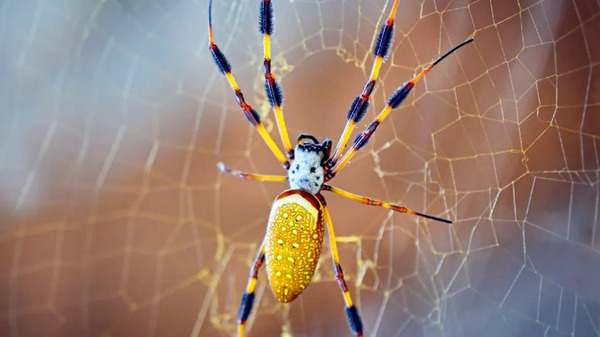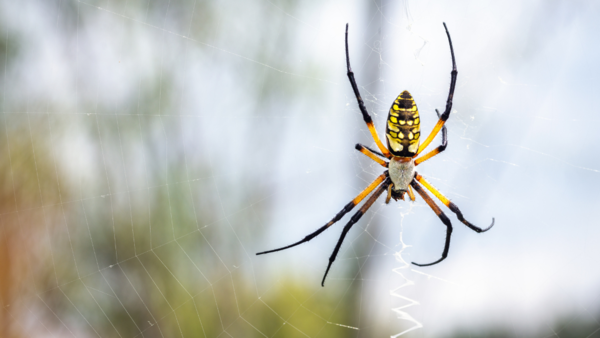The "banana spider" is one of the most fascinating and misunderstood creatures in the spider world. Known for its venomous bite and its association with banana plantations, the banana spider has earned a reputation that is often far more dangerous than it deserves. In this article, we'll dive deep into the world of the banana spider, its related species, and clear up some common myths surrounding this misunderstood arachnid.
The term "banana spider" is often used to refer to two distinct species of spiders: the Brazilian wandering spider (Phoneutria) and the Cupiennius salei, also known as the golden huntsman spider. Both species are large, venomous, and often associated with banana plants, but they have distinct features and behaviors.

The Brazilian wandering spider, scientifically known as Phoneutria, is often regarded as one of the most venomous spiders in the world. It is primarily found in tropical regions of South America, especially in Brazil. These spiders are nocturnal and known for "wandering" on the ground rather than staying in webs, which sets them apart from many other spider species.
The Cupiennius salei is also called the golden huntsman spider due to its striking golden-brown color. While this species is not as deadly as the Brazilian wandering spider, it is still part of the family of wandering spiders and shares similar behaviors, such as ground movement and a preference for hiding in dark areas.
The "banana spider" is not just one species but a nickname given to a few spiders from different genera. Here's a quick look at the scientific names and some related species:
| Common Name | Scientific Name | Danger Level | Size | Habitat |
|---|---|---|---|---|
| Brazilian Wandering Spider | Phoneutria | High | Up to 6 inches | Tropical South America |
| Golden Huntsman Spider | Cupiennius salei | Low | 3-4 inches | Central and South America, homes |
| Southern Black Widow | Latrodectus mactans | High | 1.5 inches | North America, dark areas |
| Brown Recluse Spider | Loxosceles reclusa | High | 1-2 inches | North America, dark areas |
| Tarantula | Various species | Low to Medium | 4-10 inches | Various global habitats, dry areas |
Banana spiders are known for their large size and distinct features. Below is a breakdown of their size, lifespan, and other key characteristics:
| Spider Type | Size (Leg Span) | Lifespan | Leg Count | Venom Toxicity |
|---|---|---|---|---|
| Brazilian Wandering Spider | Up to 6 inches (15 cm) | 1-2 years | 8 legs | High (neurotoxic) |
| Golden Huntsman Spider | 3-4 inches (7-10 cm) | 1-2 years | 8 legs | Low (mild) |
| Southern Black Widow | 1.5 inches (4 cm) | 1-3 years | 8 legs | High (neurotoxic) |
| Brown Recluse Spider | 1-2 inches (2.5-5 cm) | 1-2 years | 8 legs | High (necrotic) |
| Tarantula | 4-10 inches (10-25 cm) | 10-30 years | 8 legs | Low (rarely dangerous) |
The venom of the Brazilian wandering spider (Phoneutria) is one of the most potent among spiders. It is a neurotoxin, affecting the nervous system, leading to symptoms like intense pain, paralysis, and respiratory difficulties. However, deaths are rare, especially with modern medical treatments and antivenom.
Brazilian Wandering Spider: High venom toxicity, can cause paralysis and respiratory issues. Fatalities are rare.
Golden Huntsman Spider: Low toxicity, its venom is not harmful to humans.
Southern Black Widow: Highly venomous, but its bite is treatable with medical attention.
Brown Recluse: Highly venomous, can cause skin necrosis and severe damage if not treated promptly.
The banana spider is typically found in tropical environments, including South America, Brazil, and areas with banana plantations. They are also commonly found in homes, especially in areas with dark, undisturbed places.
| Spider Type | Preferred Habitat | Common Locations |
|---|---|---|
| Brazilian Wandering Spider | Ground, dark corners, tree trunks | Tropical forests, banana plantations, homes |
| Golden Huntsman Spider | Hiding places in homes, forests | Homes, Central & South America |
| Southern Black Widow | Dark, undisturbed spaces | Basements, sheds, and garages (North America) |
| Brown Recluse Spider | Dark, secluded areas | Basements, attics (North America) |
| Tarantula | Dry, warm climates | Deserts, forests worldwide |
Both the Brazilian wandering spider and the golden huntsman spider are ground-dwelling hunters, meaning they don't build webs but actively hunt their prey.
The Brazilian wandering spider is known for its aggressive behavior when cornered. It hunts at night, preferring to attack smaller animals like insects, small vertebrates, and even other spiders.
Reproduction: Females lay 100-200 eggs in sacs. The eggs hatch into tiny spiderlings.
Behavior: Primarily nocturnal, they are territorial and use their speed to catch prey.
The golden huntsman spider hunts smaller prey and prefers to ambush rather than chase. It often hides in cracks and crevices during the day.
Reproduction: Like the Brazilian wandering spider, they lay eggs in sacs, which hatch into spiderlings.
Behavior: It is more passive than the wandering spider and is not aggressive towards humans unless provoked.
There are many myths surrounding the banana spider, especially the Brazilian wandering spider. Let's clear up some common misconceptions:
| Myth | Reality |
| Banana spiders actively hunt humans. | Banana spiders are not aggressive toward humans. They bite in self-defense only. |
| All banana spiders are deadly. | Only the Brazilian wandering spider has venom that can be dangerous. |
| The Brazilian wandering spider will chase you. | They do not actively pursue humans; they prefer to hide or flee when disturbed. |
| Banana spiders are commonly found in bananas. | Encounters with banana spiders in bananas are rare. They prefer natural habitats like forests.Encounters with banana spiders in bananas are rare. They prefer natural habitats like forests. |

If you are bitten by a banana spider, here’s what to expect and how to treat it:
Brazilian Wandering Spider: Pain, redness, swelling, and in some cases, paralysis or difficulty breathing.
Golden Huntsman Spider: Mild pain and swelling, not typically dangerous.
Clean the bite with soap and water.
Apply a cold compress to reduce swelling.
Seek medical attention for serious symptoms, especially if bitten by a Brazilian wandering spider.
If you live in an area where banana spiders are common, here are some prevention tips:
Seal cracks and gaps in windows, doors, and walls.
Keep your home tidy: Spiders prefer cluttered, dark places.
Use pest control: Consider professional pest control if you're dealing with a spider infestation.
Yes, Brazilian wandering spiders are venomous and can be dangerous, but fatalities are rare with prompt medical treatment.
Banana spiders are typically found in tropical regions of South America, especially in Brazil. They are also found in homes, especially in dark areas.
Clean the bite, apply a cold compress, and seek medical help if symptoms worsen, especially with the Brazilian wandering spider.
No, banana spiders generally avoid humans and will only bite if they feel threatened.
The banana spider, whether it's the Brazilian wandering spider or the golden huntsman spider, is a fascinating creature that plays an important role in the ecosystem. While they do possess potent venom, they are generally not as dangerous to humans as popular myths suggest. With proper knowledge and precautions, you can safely coexist with these incredible arachnids and appreciate them from a distance.
animal tags: banana-spider
We created this article in conjunction with AI technology, then made sure it was fact-checked and edited by a Animals Top editor.